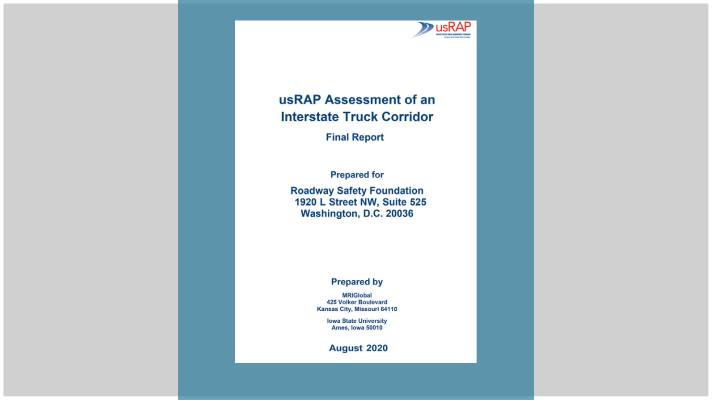The Roadway Safety Foundation in the USA has just announced they have completed a study of over 1,000 miles of the freight network between Chicago and Orlando, using the U.S. Road Assessment Programme (usRAP).
Supported by a generous grant from FedEx, the study takes a close look at the infrastructure needs on freeways and provides a good-news snapshot of how safely professional truckers operate on the corridor. Among the key findings are that the entire mainline route and key city bypasses meet global safety standards advocated by the World Health Organization and others, and 91 percent of the corridor exceeds them. The report also offers recommendations for further cost-effective improvements that may be appropriate, including traffic barriers at select locations, enhanced lighting at certain merge areas, and installation of shoulder rumble strips where not already present.
This report presents the results of a safety evaluation of an interstate trucking corridor from Ocala, Florida, to Gary, Indiana (1,129 miles passing through five states of Florida,Georgia, Tennessee, Kentucky, and Indiana). The study was conducted by usRAP team members, MRIGlobal and Iowa State University (ISU), under MRIGlobal Project No. 311565. Data on selected roadway characteristics were coded for both directions of travel on all roadways throughout the corridor by Iowa State University students trained by the usRAP team.
Overall, 91 percent of the study corridor was rated with four or five stars, indicating the presence of extensive roadway design and traffic control features related to safety. Only 9 percent of the corridor was rated with three stars. While the entire corridor is in compliance with design standards for the Interstate highway system, the three-star roads tend to have a few more curves, ramp junctions, and roadside objects than the four- and five-star roadways. The study corridor was found to be operating very safely. The study corridor has experienced only 0.117 fatal crashes per mile per year in a recent five-year period. Each mile of roadway in the study corridor (both directions of travel combined) has experienced only one fatal crash every 8.5 years. There have been only 0.040 truck crashes per mile per year in the study corridor in a recent five-year period. Each mile of roadway in the study corridor (both directions of travel combined) has experienced only one fatal truck crash every 25 years.
Infrastructure improvement needs in the study corridor that might potentially improve safety were assessed. A limited set of potentially cost-effective infrastructure improvements were identified, but none of these improvements appears to relate directly to any need to reduce truck crashes.


















